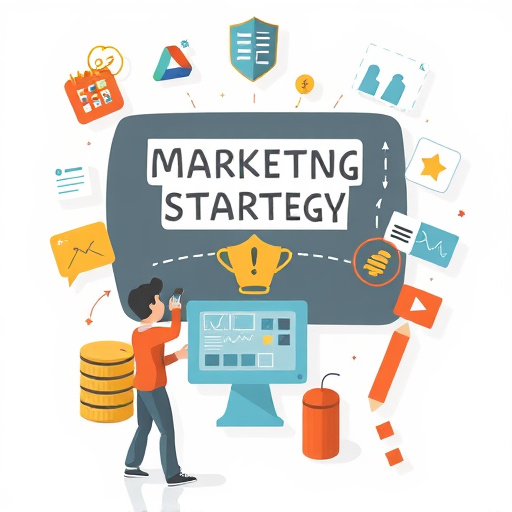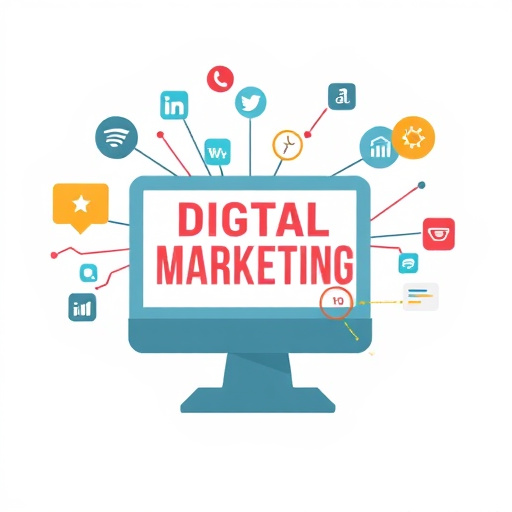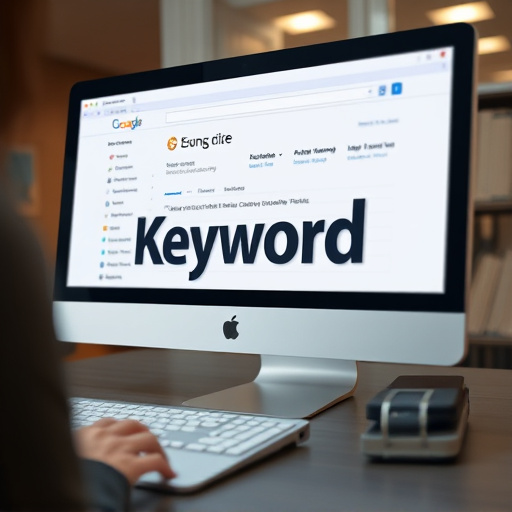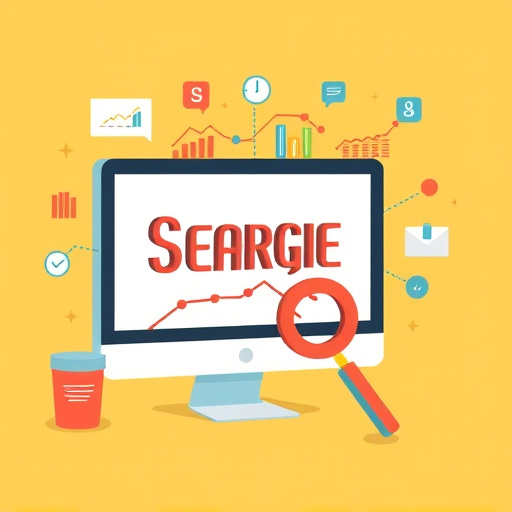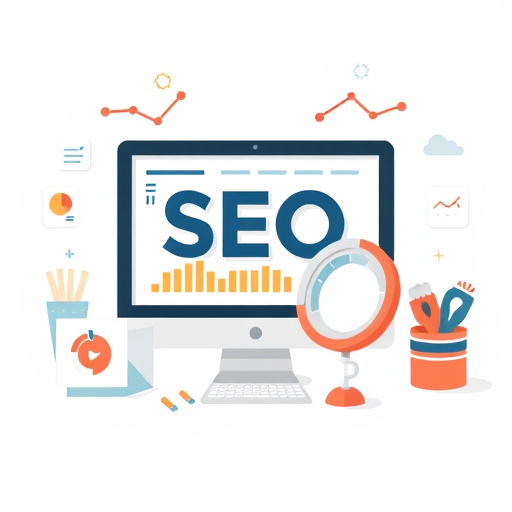Multi-channel advertising, integrating social media, email, local SEO, and search engine marketing (SEM), is key to today's digital business success. A well-optimized website acts as a central hub, enhancing brand visibility, engagement, and credibility. SEM, synchronized with multi-platform marketing, improves online presence and local search rankings, driving qualified leads. Advanced analytics track user behavior across channels, guiding optimization for maximum ROI. For local businesses, SEM and consistent directory citations fortify online visibility, while website design agencies create effective digital destinations to support multi-channel strategies.
In today’s digital landscape, multi-channel advertising is essential for reaching audiences across various platforms. Effective search engine marketing (SEM) acts as a powerful catalyst, allowing businesses to seamlessly integrate online campaigns with offline efforts. This article explores how SEM supports multi-channel strategies, delving into the benefits of integrated advertising and providing insights on tracking success in this dynamic environment. By understanding these tactics, marketers can optimize their approach to achieve maximum impact.
- Understanding Multi-Channel Advertising and Its Benefits
- Integrating Search Engine Marketing into Your Multi-Channel Strategy
- Measuring Success: Tracking and Optimizing Your SEM Campaigns in a Multi-Channel Environment
Understanding Multi-Channel Advertising and Its Benefits
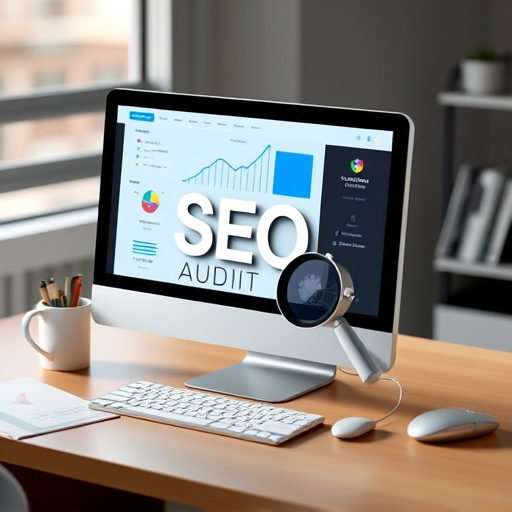
Multi-channel advertising refers to the strategic use of multiple marketing channels to reach a broader audience and enhance brand visibility. This approach goes beyond traditional single-channel strategies, allowing businesses to engage with customers on various platforms such as social media, email, search engines, and even offline channels. By leveraging these diverse avenues, marketers can create a cohesive and consistent brand message while optimizing their reach and impact.
The benefits of multi-channel advertising are significant. It enables improved customer engagement by providing a seamless experience across all touchpoints. This strategy also facilitates better data collection and analysis, allowing businesses to gain valuable insights into consumer behavior. Additionally, it offers enhanced brand credibility and recognition as customers interact with the brand through multiple channels. For search engine marketing professionals, this means optimizing campaigns for each channel while ensuring website speed optimization—a critical factor that influences both user experience and search rankings. A well-designed website, whether in Fort Worth or Hollywood FL, becomes the central hub, supporting a strong multi-channel strategy by providing a solid foundation for all online interactions.
Integrating Search Engine Marketing into Your Multi-Channel Strategy
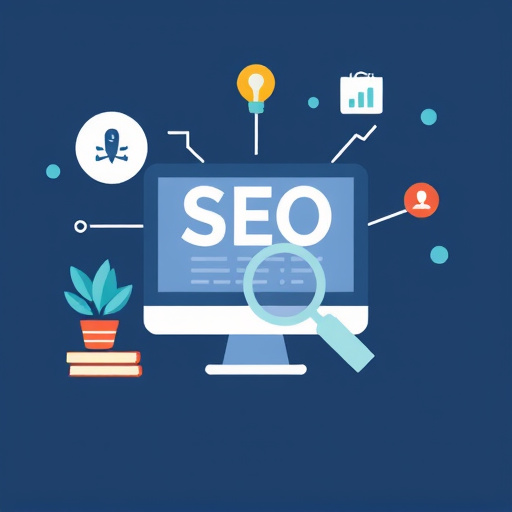
In today’s digital landscape, a robust multi-channel advertising strategy is essential for businesses aiming to thrive. Search Engine Marketing (SEM) plays a pivotal role in this mix, offering powerful tools to enhance your online presence and improve Google search rankings. By integrating SEM into your broader approach, you can significantly boost local search visibility, particularly in areas like Frisco, where local SEO is paramount.
This integration involves aligning your marketing efforts across various channels—social media, email, display advertising, and yes, search engines—to create a cohesive narrative. For instance, optimizing your website for relevant keywords not only strengthens your organic search rankings but also provides valuable insights to inform targeted ad campaigns. This strategic approach ensures that your messaging is consistent across all touchpoints, reinforcing your brand’s identity and driving more qualified leads.
Measuring Success: Tracking and Optimizing Your SEM Campaigns in a Multi-Channel Environment
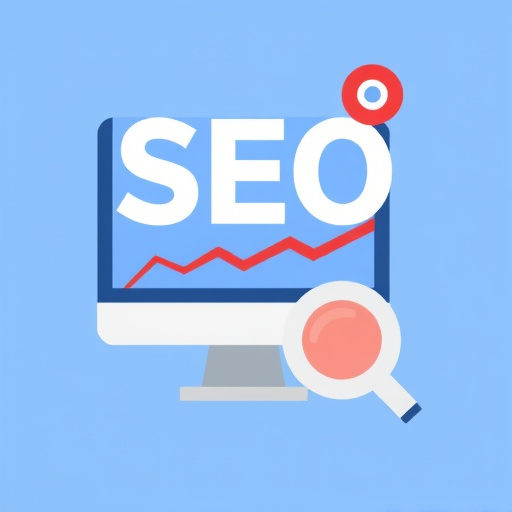
Measuring success in Search Engine Marketing (SEM) across multiple channels requires a comprehensive tracking strategy. In a multi-channel environment, understanding how each channel contributes to overall campaign performance is vital. Utilize advanced analytics tools that can provide insights into user behaviour and interactions across different platforms, including websites, social media, and local citation services. By analyzing metrics such as click-through rates, conversion rates, and return on ad spend, marketers can identify high-performing channels and optimize their strategies accordingly.
Local businesses, in particular, should focus on boosting local search visibility through SEM. A well-designed website, paired with consistent citations across local directories, enhances a business’s online presence. Engaging customers through multiple channels allows for stronger brand recognition and ultimately drives more traffic to the physical location or website. Website design agencies play a crucial role here by creating visually appealing and user-friendly websites that not only boost search engine rankings but also provide seamless navigation for multi-channel marketing efforts.
Search Engine Marketing (SEM) is no longer a standalone strategy but an integral part of multi-channel advertising. By integrating SEM into your overall plan, you can maximize reach and engagement across various platforms. Measuring success in this dynamic environment requires tracking key metrics and optimizing campaigns based on insights gained from all channels. Embracing these practices ensures your marketing efforts remain relevant and effective in today’s digital landscape.

